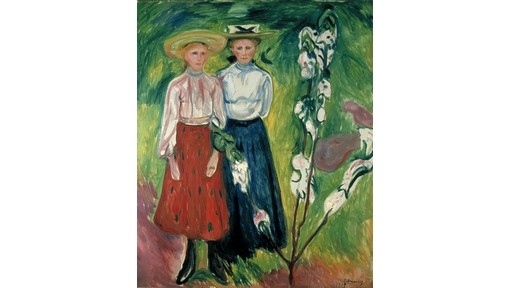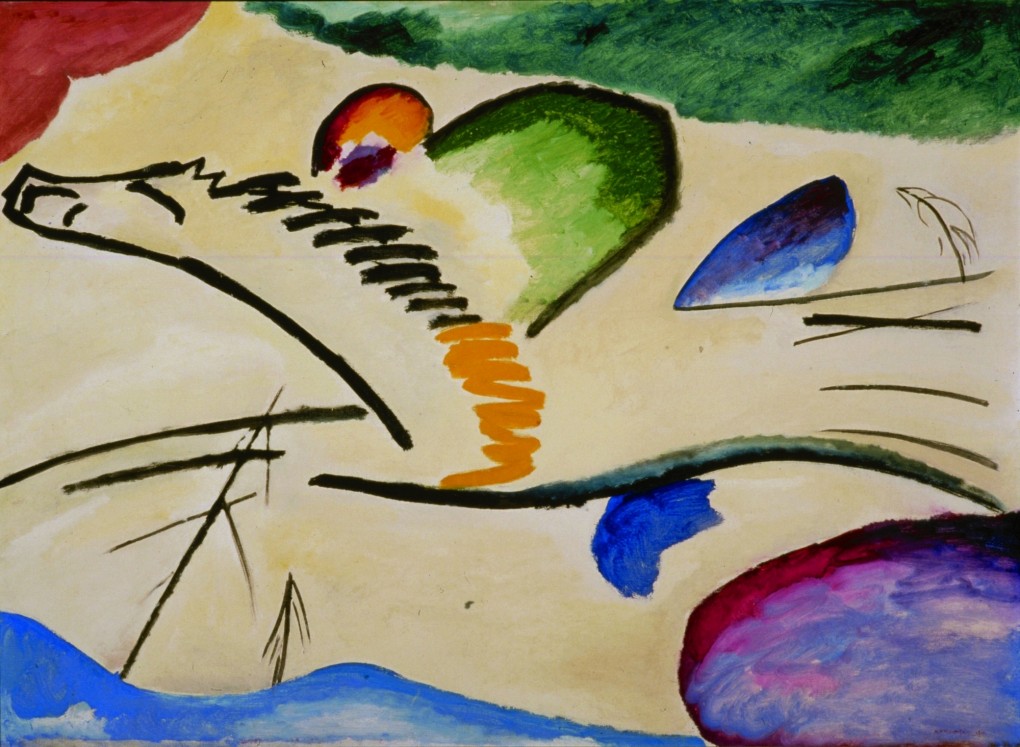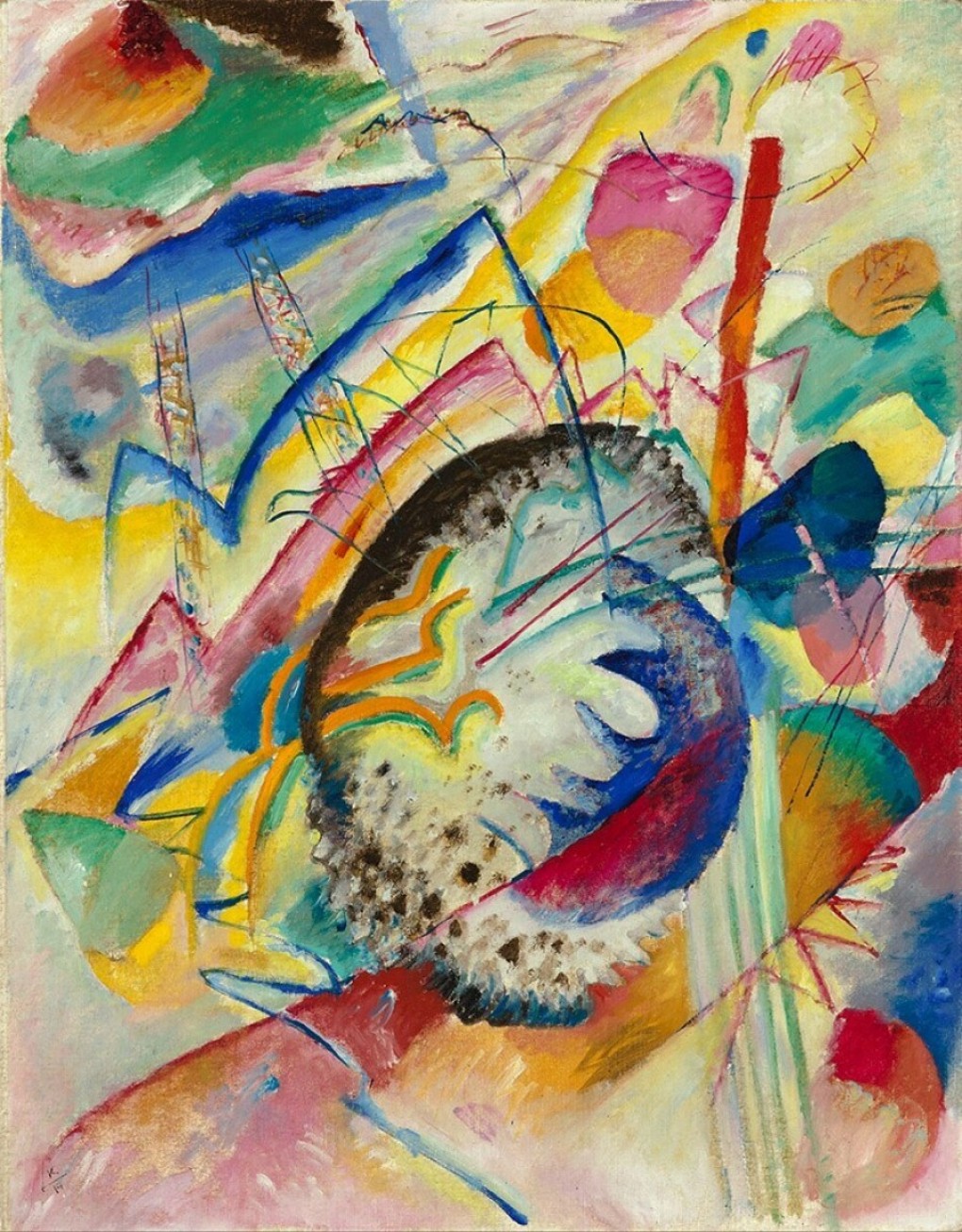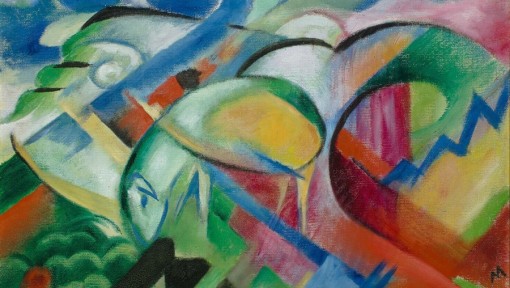
Vincent van Gogh, Poplars near Nuenen, 1885

Donors, friends and guests with a privilege pass may book a single or multiple time slots here
Donors, friends and guests with a privilege pass may book a single or multiple time slots here
Would you also like to experience more Boijmans or give a friendship as a gift? Join as a Friend and get invited for the annual Museumpark Vriendendag. Will we see you or your friend in the depot soon?

In a certain respect Expressionism was the opposite of Impressionism: instead of capturing impressions of the visible world, the Expressionists revealed their personal visions. Discover here how form, colour and line expressed the imagination of the artists.
Expressionism is a collective term used to describe the work of many artists and artists’ groups active throughout Europe around 1905, such as Die Brücke and Der Blaue Reiter. In a certain respect Expressionism was the opposite of Impressionism: instead of capturing impressions of the visible world, Expressionist artists revealed their personal visions. They used colour and line to express their imagination, thus presenting their unique vision of reality. Expressionism is related to Fauvism.
Expressionism had its roots in the work of Vincent van Gogh with his confrontational directness, forceful brushwork and vivid colours. He referred to his painting ‘Poplars near Nuenen’ as ‘Symphony in Yellow’. It marked the transition from his darker Dutch oeuvre and the lighter and later brightly coloured expressive work of his French period. In 1885 Van Gogh stayed with his parents in Nuenen, near Eindhoven, where his father was a minister. The church and rectory are visible in the distance. Van Gogh had already completed this painting when he became acquainted with Impressionism. Influenced by the much lighter brushwork and exuberant colours of the Impressionists, he decided to paint over his work with light brush marks.

Vincent van Gogh, Poplars near Nuenen, 1885
Vincent van Gogh described it in detail in a letter to his brother Theo: ‘The one landscape I’m taking with me […] the one with the yellow leaves: I think you’d like it too. […] The horizon is a dark line against a light line of sky in white and blue. In this dark line little flecks of red, bluish and green or brown, forming the silhouette of the roofs and orchards, the field greenish. The sky higher up, grey, against it the black trunks and yellow leaves. Foreground completely covered with fallen yellow leaves, in which 2 little black figures and one blue. On the right a birch trunk, white and black, and a green trunk with red-brown leaves.’
Van Gogh was one of the forerunners of Expressionism. An important similarity with the later Expressionists is the use of colour that he describes in his letter and his way of applying paint. The biggest difference between Van Gogh and the Expressionists is the perspective. In Van Gogh’s paintings the perspective clearly creates three-dimensional space, whereas the art of the Expressionists appears flat.
Edvard Munch was a pioneer of Expressionism but also a representative of late-19th-century Symbolism.

The models for this double portrait from 1905 were two girls from the Norwegian fishing village Aåsgardstrand. Munch owned a little house there and painted the local people. The girls stand rather stiffly behind a flowering apple tree, which symbolises the innocence of youth. They are painted with loose, quick brush marks and relatively thin paint. This canvas is the only painting by Munch in a Dutch museum collection.
Former head of collections and research Jonieke van Es explains her fascination for the panting ‘Two Girls under an Apple Tree in Bloom’ by the Norwegian painter, Edvard Munch.
Together with artists Franz Marc, August Macke and Alexej von Jawlensky, Vasili Vasileevich Kandinsky established the artists’ group Der Blaue Reiter (The Blue Rider), which published a journal with the same name. The group had a great influence on the development of German Expressionism and the international avant-garde. Their artistic beliefs were informed by the Theosophist worldview of Rudolf Steiner. The leaping horse in the work ‘The Lyrical’, which Kandinsky depicted with just a few lines and blocks of colour, dates from 1911. Kandinsky wanted to unite emotion with form, line and colour and to liberate this synthesis from any form of objective, descriptive role.
He thus paved the way for abstract art. In this respect, ‘Lyrical’ is an important transitional work: the horse and rider are still recognisable but the lines and blocks of colour also function as independent elements. In his later works he developed a completely free, abstract visual idiom.
With its whimsical jumble of colours, lines and forms, ‘Large Study' is typical of the expressiveness of Kandinsky’s abstract works. In later years he increasingly worked with geometric forms.



The German Expressionist Franz Marc had an almost religious reverence for nature. For him an animal was a pure and innocent being. In this painting the animal is fused with the landscape. The diagonal and curved lines compete to create a rhythmic pattern. As a member of the artists’ group Der Blaue Reiter (1911-1914), Marc shared Kandinsky’s ideas about the pure use of line and colour, independent of their depictive qualities. Unlike Kandinsky’s works, Marc’s always remained representational, but the image is subordinate to the interplay of colours, lines and forms.

Following the First World War, during which he was seriously wounded as an Austrian soldier, Oskar Kokoschka earned an international reputation as an artist. Despite the Expressionist character of his works, Kokoschka was not associated with the modern art movements of his time.
With his use of unnaturalistic colours and rough brush marks, Kokoschka’s intention was not to create an accurate likeness of these two friends bur rather to express their characters. On the left, the introverted lawyer Hans Mandersteig (jurist) is rendered in a dreamy blue, while yellow accents symbolise his inner glow. The extravert art historian, Carl Georg Heisse, with his animated hands is painted in a dynamic green. The individual portraits are united in a single large frame. Kokoschka wanted his models to do whatever they were doing, hence their dynamic depiction. Kokoschka has shown his two friends playing cards. He considered it more important to express his models’ psyche - their soul - than to give them ten fingers, two ears and a nose.
Bregje van der Laar, the well-known guide from the Boijmans TV series, is another great fan of Oskar Kokoschka. To mark the occasion of the exhibition in her museum, Bregje brings the Austrian artist back to life in an intimate conversation based on a programme shown on German television in 1966.